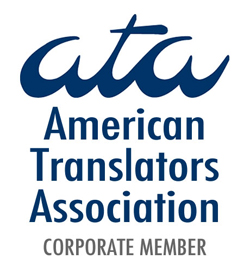
We also accept payments via Paypal
Huri Translations
Tel. +689 89 205 483
info@huri-translations.pf
PO BOX 365 Maharepa
98728 Mo'orea
French Polynesia
N°TAHITI 876649
Subscribe to our newsletter


Foremost among the challenges inherent in devising suitable translations for medical parlance is the paucity of extant medical terminology within certain Pacific Islands languages. While lexemes pertaining to anatomical components are meticulously chronicled, medical axioms and modalities within these regions are frequently entrenched in traditional therapeutic modalities and botanical remedies, bereft of direct analogs to modern medical verbiage. Consequently, this entailed a symbiotic collaboration with medical practitioners, culminating in the articulation of apt and precise diction whilst upholding cultural sagacity.
Illustratively, the subsequent instances portray the adaptations engendered for the concept of "mask":
Tahitian:
Tāpoʻi vaha - Signifying Mouth cover
Rarotongan:
Tāpoki vaʻa - Signifying Mouth cover
Niuean:
Pā mata - Signifying Face protection
Tongan:
Meʻa ʻUfiʻufi Fofongá - Signifying Object that veils the face
Tokelauan:
Mata puipui - Signifying Facial screen
Tuvaluan:
Ufi Mata - Signifying Facial veil
Gilbertese:
Nángoan te úbu - Signifying Nasal safeguard
Māori:
Maruhā - Signifying Respiratory Shelter
Marshallese:
Māāj
Chuukese:
Masku
Palauan:
Mask
During the pandemic's nascent stages, the predominant perception among Pacific Islanders was that concealing the oral aperture alone was sufficient, hence the focus on terminologies aligning with this notion in the translations.
In each of these instances, public directives did not yet differentiate between diverse varieties of facial concealments, encompassing face masks, visors, surgical masks, N95 respirators, and the like, each differing organically across geopolitical confines. Consequently, it necessitated the pursuit of supplementary terminologies for these nuanced distinctions.
Procuring apropos designations for medical phraseology within Pacific Islands languages, particularly amidst the COVID-19 pandemic, confronted substantial hurdles. The absence of extant medical nomenclature and the requisite reshaping of concepts to seamlessly meld with linguistic and cultural milieus engendered a nexus of synergy between medical connoisseurs, translators, and linguists. The foregoing instances serve as a testament to the endeavors undertaken to ensure precision in translations whilst honoring the unique traits intrinsic to Pacific Islands languages.

Navigating the intricacies of medical lexicon for the healthcare of Pacific Islanders presents a multifaceted and formidable endeavor. The idiosyncratic cultural and linguistic subtleties intrinsic to these languages may not always seamlessly align with Western medical paradigms. Amid the throes of the COVID-19 pandemic, the global arena was confronted with the exigency of multilingual discourse, exacerbated by the dominance of English-centric communication and its resultant exclusionary effects. This underscored the pivotal significance of indigenous wisdom, cultural diversity, and collaborative engagement with policy makers.
"Translating Medical Precision: Navigating Linguistic and Cultural Realities in Pacific Island Healthcare Amidst the COVID-19 Pandemic"
In the wake of the COVID-19 health exigency, administrations across Pacific Island nations mobilized to inaugurate public communication crusades pertaining to the judicious utilization of facial coverings. The translation of pivotal terminologies such as "Mask" emerged for effective communication and comprehension within the local populations.
